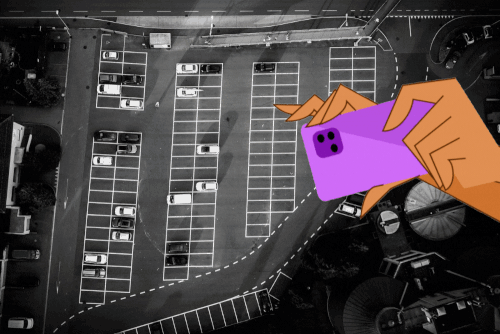Toronto’s Curbside Patios Made 49 Times More Money Than the Parking They Replaced
A curbside patio in Nelson, BC. (Source: adrimcm/Flickr.)
A recent study on curbside dining in Toronto found that there are loads of financial possibilities waiting in empty parking spaces.
During the pandemic, Toronto, like many cities, began allowing some on-street parking spaces to be used as patios by local businesses. As reported by The Globe and Mail, residents spent a total of $181 million at curbside patios within 13 weeks of summer in 2021. If those spaces had remained dedicated to parking, only $3.7 million would have been reaped during the same time period. In other words, curbside patios produced 49 times more revenue than what would have been earned from parking fees.
“This is an example of how productive a place can be when we don’t fixate on parking,” said Strong Towns Senior Editor Daniel Herriges. “Public space in a lively urban area is a tremendously important and scarce resource, and parking is often just about the least valuable thing we can do with it. Any city can do this math.”
Parking spaces are abundant in North America. It’s common, even in dense urban areas like the core of Toronto, to see generous amounts of both private parking and public curbside parking along nearly every street. Too often, said Herriges, local governments make no attempt to account for the opportunity costs.
“In most cities, parking is kind of the assumed, default use of the curb lane on city streets,” Herriges said. “It’s often offered for free—even in places like New York where demand ought to be sky high—or it’s underpriced relative to what drivers would actually be willing to pay to park. This amounts to an enormous subsidy to North American drivers, with the costs paid by society in terms of lost productivity and greater distances between the places we actually want to be.”
“Free” public parking actually costs the public a hefty amount. It’s not just the cost of the asphalt and the maintenance. The Toronto study dramatically illustrates another cost of parking: all the activity that can’t happen in that wasted space.
“The decisions we make, whether for ourselves or for our cities, have an opportunity cost—including decisions related to parking,” said Chuck Marohn, Strong Towns president.
Curbside dining in Washington, DC. (Source: Elvert Barnes/Flickr.)
Canada, like the U.S., is witnessing a widespread reevaluation of these costs and tradeoffs. Alongside a host of smaller cities and towns, both Toronto and Edmonton have, in recent years, completely abolished their mandatory parking minimums, rules which require private homes and businesses to maintain a certain number of parking spaces. In tandem with these reforms are efforts like Toronto’s to re-envision street parking.
Trading a small amount of street parking for curbside dining has been an obvious win for Toronto—and there are many other similar wins that cities of all sizes could pursue.
“The key is to think of the street not as inherently being a space to park or drive cars, but as public space that can be purposed for any sort of public activity,” said Herriges. “The purpose of the street is to be a destination, to be a place people want to be. That’s not to say nobody needs to park a car, but very often, using that scarce curb space to help create an inviting destination is going to blow using it for parking out of the water, in terms of value created.”
By charging a fair market value for parking and putting it on a level playing field with alternatives, we can reimagine parking spaces in a multitude of ways, including public parks, community gardens, or restaurant and retail space.
“An overabundance of parking will never be the pathway to developing a financially productive place,” said Herriges. “We have to start imagining our cities' parking differently.”
GET READY FOR #BLACKFRIDAYPARKING!
Your parking lots are too big to fill, even on the busiest shopping day of the year. Here's how you can help use that land for something greater.







As Dallas examines its land use plan, it's time to talk about parking lots.